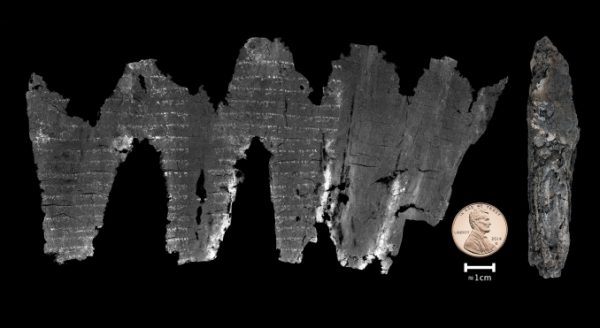
A Hebrew scroll that was essentially destroyed has been given new life thanks to modern technology.
Digital technology allowed scientists to virtually unroll the scroll without touching it. It hadn’t been read in 1,500 years.
From History.com:
In 1970, Israeli archaeologists excavating an ancient synagogue near the village of En-Gedi on the western shore of the Dead Sea discovered the oldest Hebrew scroll outside of the Dead Sea Scrolls. Written on parchment made of animal skin, the manuscript had resided in an ark when a fire consumed the village around 600 A.D. By the time archaeologists found it more than a millennium later, the badly burnt En-Gedi scroll looked like just a lump of charcoal.
What the scholars found inside the En-Gedi scroll was the first two chapters of the Book of Leviticus, a Bible passage that ironically references burnt offerings. As vowels had yet to be developed until the ninth century, the text is all consonants. Scholars say the writing is remarkable because, unlike even the Dead Sea Scrolls, it is identical to the Masoretic Text, the authoritative version of Hebrew Bible. An analysis of the style of the ancient script suggests the scroll could be even older than previously thought and written in either the second half of the first century A.D. or the beginning of the second century A.D., which makes it the earliest copy of a Pentateuchal book ever found in a synagogue’s ark.
You can learn more about this ancient scroll in the video below.
Technology is amazing. It’s interesting to imagine the exact history of this scroll, including who wrote and used it. We may never know all of that, but we can marvel at what was unearthed.
Please share this if you love history!
H/T: History.com
More About:Movies
